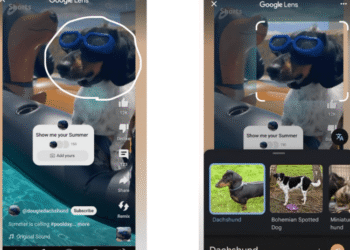Despite all the talk about AI and the transformation of business, it remains that many brand businesses still wind up in financial distress, in the equity emergency room, repeating the same tendencies that lead to trouble. New is old when it comes to brand mismanagement.
Viz Nissan.
You may recall that in 1999, Nissan was in such dire straits that France stepped in and created a lifeline via Renault and Carlos Ghosn. The Nissan Renaissance, as it was dubbed, began to address the brand’s global mess. In an article for BusinessWeek, Carlos Ghosn released the results of Nissan-generated research showing that relative to a Toyota, Nissan dealers would need to provide an incentive of over US $1000 in order to make a sale.
This article is part of Branding Strategy Insider’s newsletter. You can sign up here to get thought pieces like this sent to your inbox.
The research utilized two identical vehicles, one branded as Nissan and the other branded as Toyota. Only the brand name was different. Yet, Nissan would need to give away the new vehicle in order to convince a prospective driver to switch from a Toyota purchase to a Nissan purchase. A true competitive disadvantage for Nissan
Quality and styling were issues. Additionally, years of incentives had a negative impact on Nissan’s brand value perception. Nissan was a deal. Toyota was a great value.
To fix the problems and resuscitate the Nissan brand, Carlos Ghosn implemented the use of cross-functional global teams across all aspects of the business, including a laser focus on the Nissan brand. The reincarnation of the Z (remember the gorgeous Datsun 280 Z?) also figured in revitalizing the Nissan business. Each dealer received only 3 Z cars. But the cars had prominent space on the dealership floors.
The Wall Street Journal, in an article discussing the new CEO of Nissan, Ivan Espinosa, draws comparisons between Nissan in 1999 and Nissan today. Putting aside the installation of a non-Japanese CEO, The Wall Street Journal writes that today Nissan is once again bleeding cash, is not remotely profitable, and is suffering from mismanagement. In 1999, Nissan was submerged by debt and high costs. To make matters worse, The Wall Street Journal just wrote:
“… Nissan has arguably the bleakest outlook of any major automaker.”
There are concerns that Nissan will struggle to remain an unattached company. The current situation is so dire that it is possible, perhaps, that Nissan will be acquired or merged with another automotive brand.
It is important to note that the news on what will be required to salvage Nissan again does not include any discussion of the Nissan brand. The news is about factory closures, potential property sales, personnel cutbacks, and increased production. The news is cost-cutting. All of these steps are necessary; no question that stopping the bleeding is critical.
But, as the above reference research indicated in 1999, if the brand is not perceived by drivers to be valuable, there will be no shareholder value.
Carlos Ghosn dedicated a cross-functional team to rearticulating the brand promise. He said,
Strong Brand Identity will increase the value of the Nissan Brand. This will enable us to improve the transaction price of Nissan cars, parts, and services, thereby increasing Nissan’s sales and profits.
One of Mr. Ghosn’s engineering compatriots from Renault, who accompanied Mr. Ghosn to Japan, Patrick Pelota, added,
“Implementing the Nissan Brand Identity will be a big challenge for everybody. All of us will have to be involved. What we are building together with this common vision of the future is a new Nissan.”
CEO Espinosa attributes the current state of Nissan to past strategies that have led to the company’s current difficulties. His stated priorities are, according to The Wall Street Journal, “… to close seven of Nissan’s seventeen factories, letting go of 20,000 employees and capping production at 2.5 million sales.”
Mr. Espinosa wants to increase US production due to the new tariffs. In addition, there will be a partnership with a Chinese brand. By partnering with a Chinese automaker, Nissan hopes to “export its China-grown technology.” Right now, Nissan is perceived to be in “catch-up mode” when it comes to technology.
As for the Nissan brand, the only apparent effort is using the Z car to represent the Nissan brand. Like Carlos Ghosn, Mr. Espinosa understands the brand value of the Z. Mr. Espinosa says that the Z is the soul of Nissan. This may be true, but how exactly does the Nissan team define the “soul” of Nissan? Just what is Nissan’s brand essence?
As a marketer, your job is to compete. Compete differently with The Blake Project.
In the 1999 turnaround, a great deal of effort was spent articulating just what Nissan is. Global internal discussions created the idea that Nissan was both Bold and Thoughtful. The elements of Bold and Thoughtful were used by Shiro Nakamura, chief creative officer until his retirement in 2017. Nakamura-san insisted that his designers and engineers know the elements of the Nissan brand promise and its brand essence. His words were, “You are not designing bumpers or headlights. You are designing Nissan bumpers and headlights.”
The cross-functional Nissan brand team was not a sequential task force. The cross-functional brand team was concurrent with all the other manufacturing and financial teams.
Somewhere in Mr. Espinosa’s strategic priority list, there must be a “revitalize the Nissan brand” action list.
Nissan brand revitalization must be part of the strategic package. Brand is not an afterthought. Brand is a forethought.
Contributed to Branding Strategy Insider by: Joan Kiddon, Partner, The Blake Project, Author of The Paradox Planet: Creating Brand Experiences For The Age Of I
At The Blake Project, we help clients worldwide, in all stages of development, define and articulate what makes them competitive and valuable at pivotal moments of change. Please email us to learn how we can help you compete differently.
Branding Strategy Insider is a service of The Blake Project: A strategic brand consultancy specializing in Brand Research, Brand Strategy, Brand Growth, and Brand Education
Post Views: 36


















